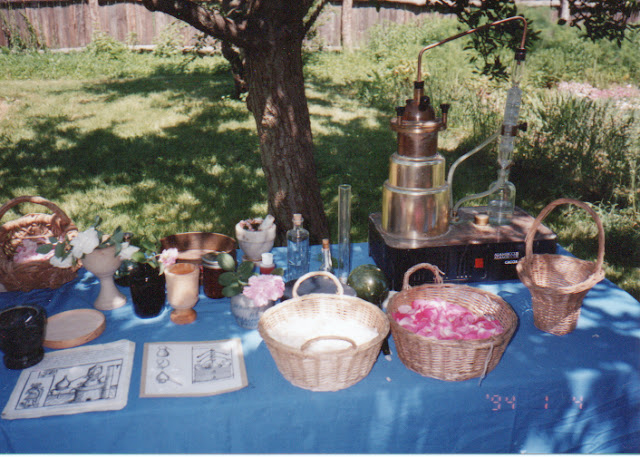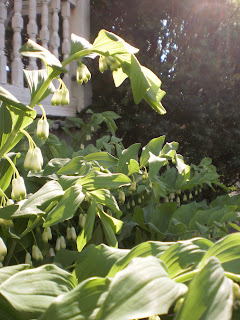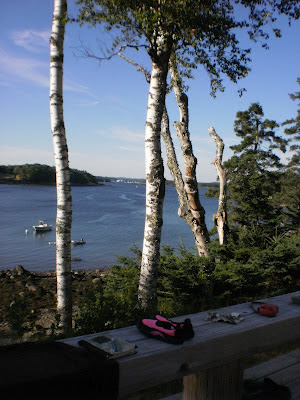 |
| The lovely geometry of the spring garden, when beds are newly turned and planted. |
 |
| I seeded calendula, an annual, into the new lavender bed where it will share the space this year. Hopefully, next season the lavender will need the entire 4' wide bed. |
Elecampane
a stately perennial
with large composite yellow flowers, makes a good show in the early garden.
Later in the season,
they will get rangy and unkempt
and need cutting back,
leaving some huge downey leaves
to collect strength into
the roots.
In the autumn,
I will lift the whole plant,
replant the side shoots,
and harvest the roots
for a sweet and effective
cough syrup.
 |
| Hops flowers. |
In the 16th and 17th centuries, when hops began to be produced in quantity for european beer production, acres of hops vines were trained onto 'poles' -- usually tall "T" shaped trellises. At the end of the season, the hops were cut, and the poles were pulled out and laid on sawhorses, where the papery 'fruits' could be picked off by hand. Deforestation in Europe was already a problem, and so "an acre of hops poles' was valuable enough to be listed in period inventories.
Echinacea purpurea
in bloom in June.
Here, again, the root is
primarily
the part used -- along
with the seed heads --
and so this is enjoyed
all season
and dug, separated,
and harvested
in the fall.
My garden this year was a combination of about a 1/2 acre of established (and formerly allowed to languish) garden, and another 1/2 acre of new 4' wide herb beds, newly planted.The older section of the garden mostly need sorting...curbing the enthusiasm of some plants -- motherwort, catnip, sage -- while weeding and giving a little space to others -- like butterfly weed. A bed of chives, lifted and separated, became regimented into a long 30 foot row, more easily harvested by our CSA members.
A partial list of the produce from the herb garden for 2012 includes:
Echinacea, peppermint, spearmint, lemon balm, catnip, mountain mint, french sorrel, chives, marjoram, oregano, thyme, lemon thyme, lavender, witch hazel, rhubarb, lovage, feverfew, motherwort, valerian, borage, bugloss, wood betony, elecampane, marshmallow, joe pye weed (queen of the meadow), nasturtiums, rosemary, corn flowers, elder blossoms, elder berries, calendula, hyssop, anise-hyssop, tulsi -- both krishna tulsi and rama tulsi -- lemon basil, purple basil, parsley, roman chamomile & mexican 'lemon gem' marigolds.
Edible/medicinal weeds include: chickweed, purselane, dandilion, yellow dock, red clover, white clover, mallows, & violets. Appreciate the volunteers!!!




















































